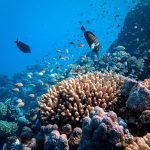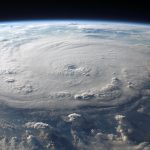 September 9, 2021 12:41 pm
Published by Climate Extremes
September 9, 2021 12:41 pm
Published by Climate Extremes
Coral bleaching events have been reported over the Great Barrier Reef during La Niña events and the neutral phase of the El Niño–Southern Oscillation, when large-scale sea-surface temperatures may be cooler than normal. How does this occur?
 July 14, 2021 1:23 pm
Published by Climate Extremes
July 14, 2021 1:23 pm
Published by Climate Extremes
In this study, CLEX researchers and colleagues showed that the North Atlantic sea-surface temperature response to ENSO is nonlinear with respect to the strength of the sea-surface temperature forcing in the tropical Pacific.
 March 5, 2021 1:19 pm
Published by Climate Extremes
March 5, 2021 1:19 pm
Published by Climate Extremes
CLEX researchers found coastal marine heatwave hotspots were concentrated along the Mediterranean Sea, Japan Sea, south‐eastern Australia and the north‐eastern coast of the United States. They also found the frequency of these events and their duration globally increased by 1–2 events per decade and 5–20 days per decade. Most of the marine heatwave hotspots identified were associated with high upward trends.
 August 6, 2020 8:00 am
Published by Climate Extremes
August 6, 2020 8:00 am
Published by Climate Extremes
CLEX and NCAR researchers explore decade-long variations in global mean temperature that are superimposed on the warming trend and find what can make short term warming trends so unpredictable.
 April 15, 2020 3:18 pm
Published by Climate Extremes
April 15, 2020 3:18 pm
Published by Climate Extremes
Most climate models correct for current SSTs but don't correct for the reliability of future SSTs. This study shows that making that additional correction has a profound impact on how tropical cyclones will develop in a warmer world.
 March 13, 2020 9:49 am
Published by Climate Extremes
March 13, 2020 9:49 am
Published by Climate Extremes
A new study by CLEX researchers and colleagues shows that CMIP5 models as a group, when forced by observed sea surface temperatures underestimate, these atmospheric feedbacks on average by 23%. This underestimate can be linked to the wrong location at which climate models simulate the most important tropical circulation, called the Walker circulation.
 April 29, 2019 2:19 pm
Published by Climate Extremes
April 29, 2019 2:19 pm
Published by Climate Extremes
CLEX researchers found that applying a statistical correction to projected sea surface temperatures has a major impact on changes to rainfall with global warming, leading to a 25% reduction in future precipitation projected for the south-western Pacific.
 August 14, 2018 3:32 pm
Published by Climate Extremes
August 14, 2018 3:32 pm
Published by Climate Extremes
The aim of this project is to gain a better understanding of the drivers of seasonal climate extremes over Australia, with a focus on the potential role of tropical ocean basins. The student researcher will use a range of observations and climate model outputs to examine the variability of extreme temperature and rainfall across Australia.








